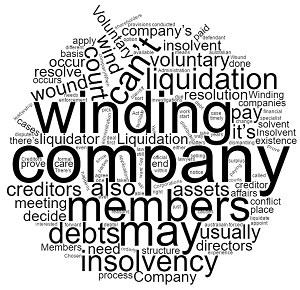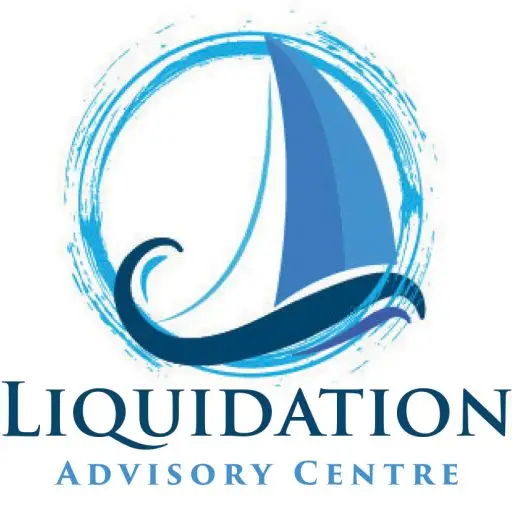Voluntary Liquidation vs. Other Insolvency Processes: Which is Right for Your Business?
 When a business faces financial difficulties or decides to cease operations, it must consider the various Voluntary Liquidation vs Insolvency options available. You may wish to restructure the business to become more profitable in the long term, or if things are more urgent, you can apply to your creditors to go into voluntary administration with the aim of trading your way out of financial difficulties.
When a business faces financial difficulties or decides to cease operations, it must consider the various Voluntary Liquidation vs Insolvency options available. You may wish to restructure the business to become more profitable in the long term, or if things are more urgent, you can apply to your creditors to go into voluntary administration with the aim of trading your way out of financial difficulties.
However, if a voluntary administration is not viable, there are two primary options for company liquidation: voluntary liquidation and compulsory liquidation. A compulsory business liquidation is a court action initiated by creditors.
At the Liquidation Advisory Centre, we have over 30 years of experience dealing with company debt, insolvency, business restructuring, and company liquidation. In most cases, we recommend the voluntary liquidation approach, as it offers business owners, stakeholders, company directors, and shareholders a more controlled approach to an already difficult situation.
Members Voluntary Liquidation
- Initiation: A Members Voluntary Liquidation is initiated by the company’s directors and shareholders when the company is insolvent and they wish to wind up its affairs voluntarily.
- Controlled Process: Directors and shareholders appoint a liquidator who maintains control over the process, ensuring an orderly wind-up.
- Efficient Asset Distribution: Assets are distributed among shareholders according to their entitlements, promoting fairness and transparency.
- Tax Efficiency: It can offer tax advantages for shareholders compared to other methods of extracting value from the company.
Creditors Voluntary Liquidation
- Initiation: When a company is insolvent or is likely to become insolvent and the directors and shareholders want to wind up its affairs voluntarily, they initiate voluntary liquidation.
- Controlled Process: Directors and shareholders appoint a liquidator who maintains control over the process, ensuring an orderly wind-up. Directors and shareholders lose control over the company. Creditors can change liquidators if they wish.
- Investigation: The liquidator investigates the company’s financial dealings to determine whether company funds have been dealt with fairly. The liquidator will consider the actions of the directors and whether they should hold any accountability for the company’s position. The liquidator will also sell the company’s assets. The combined funds are then distributed to creditors in accordance with the priorities set out in the legislation.
- Finality: The liquidation process is the end of the company, and three months after the conclusion of the liquidation process, ASIC will deregister the company.
Other Insolvency Processes
Other insolvency processes, such as compulsory liquidation or receivership, are typically initiated by external parties, including creditors or the court. Liquidation vs Insolvency options are best explored with a qualified professional such as the team at the Liquidation Advisory Centre.
Advantages
- Creditor Protection: These processes may offer greater protection to creditors, ensuring they receive a higher percentage of what is owed.
- Court Oversight: Some processes involve court oversight, which can provide a more structured and regulated approach.
Disadvantages
- Loss of Control: Business owners, stakeholders, company directors, and shareholders lose control over the process as external parties play a significant role. While it is essential to ensure creditors are paid within the framework of the law, the results may not always benefit all parties equally.
- Potentially Hostile: These processes can often be more adversarial, especially when initiated by creditors or through court orders. Therefore, it is advantageous for business owners, stakeholders, company directors, and shareholders to take control of the situation early to avoid future issues.
- Less Tax Planning: Tax planning may be less flexible compared to voluntary liquidation, potentially resulting in higher tax liabilities for business owners, stakeholders, and company directors and less of a return for shareholders.
Which is Right for Your Business?
The choice between voluntary liquidation and compulsory liquidation processes depends on your business’s financial situation with its creditors, their goals, and the interests of business owners, stakeholders, company directors, and shareholders.
- Members Voluntary Liquidation: It is suitable for solvent companies where directors and shareholders wish to control the process, efficiently distribute assets, and optimise tax outcomes.
- Creditors Voluntary Liquidation: Is suitable for companies that have identified they are under financial stress and wish to address these issues before they get ‘further out of hand’.
- Compulsory Liquidation: These may be more appropriate when creditors are pressing for repayment, court oversight is needed, or protecting creditor interests is a priority.
Voluntary Liquidation vs Insolvency Options
Seeking professional advice from insolvency practitioners, such as the team at the Liquidation Advisory Centre, is crucial to determining the best course of action for the company’s unique and specific circumstances. Each business liquidation situation is different, and a well-informed decision made by a company director with guidance from liquidation and insolvency practitioners can help navigate the complexities of voluntary liquidation vs insolvency options while minimising losses and optimising outcomes for all parties involved. Why not contact us for a free consultation on the Liquidation vs Insolvency Options available to you?
Andrew Bell Liquidation Advisor
Let’s Talk
With over 30 years of experience in debt solutions and liquidation in Australia, Andrew can find a solution for you.
“Nothing is more satisfying to me than knowing that I’ve helped someone get back on their feet by guiding them through the Liquidation Process. Rest assured; you’re in good hands with me as we solve your financial problems together.”

